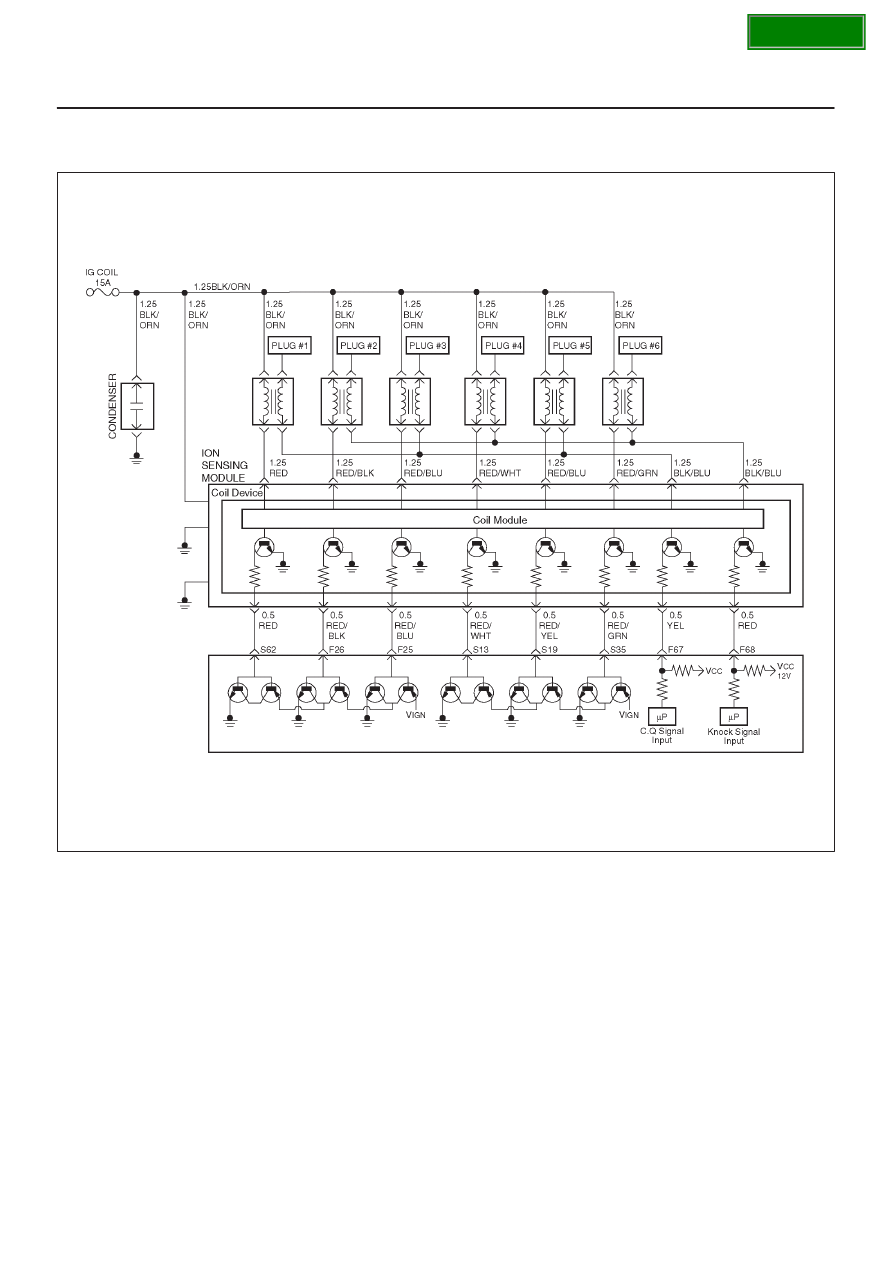Content .. 1533 1534 1535 1536 ..
Opel Frontera UE. Manual - part 1535

6E–355
6VD1 3.2L ENGINE DRIVEABILITY AND EMISSIONS
Diagnostic Trouble Code (DTC)
P1326 ION Sensing Module Combustion Quality Input Circuit Fault
060R100135
Circuit Description
The Power Control Module (PCM) checks the validity of
the signals used in the ION Sensing module at the
following engine operating conditions.
D
The test is performed to evacuate the Combustion
Quality (CQ) signal pulse width if it is within a
predetermined range. If the CQ signal pulse width is
out of the predetermined range, the fail counter will be
incremented. If the failure counter exceeds the
calibration, then test is complete and a failure will be
reported. If the sample counter threshold is reached
before the failure threshold, then the test is complete
and a pass will be reported. This test will detect an
open/short in the CQ line circuit, ION Sensing module
faults and analog input faults in the PCM.
Conditions for setting the DTC
D
Ignition voltage is between 10volt and 16 volts.
D
No Crank DTCs set.
D
No cylinder ID DTCs set.
D
CQ pulse width is less than 30
m
s or more than 1070
m
s.
Action Taken When the DTC Sets
D
The PCM will illuminate the malfunction indicator lamp
(MIL) the first time the fault is detected.
D
The PCM calculates an air flow value based on idle air
control valve position, throttle position, RPM and
barometric pressure.
D
The PCM will store conditions which were present
when the DTC was set as Freeze Frame and in the
Failure Records data.
Conditions for Clearing the MIL/DTC
D
The PCM will turn the MIL “OFF” on the third
consecutive trip cycle during which the diagnostic has
been run and the fault condition is no longer present.